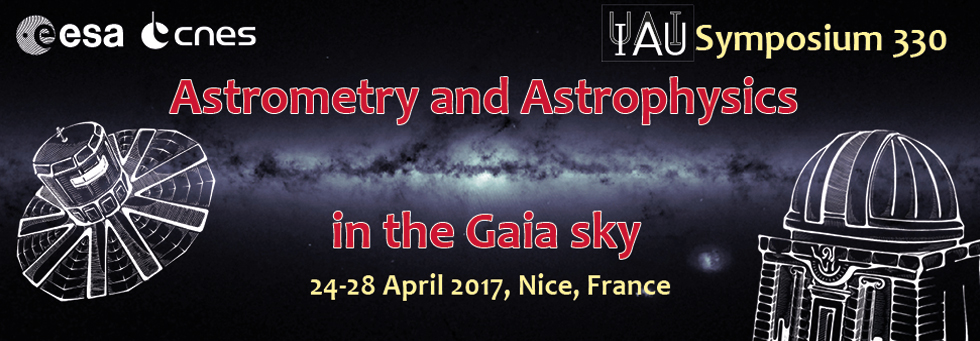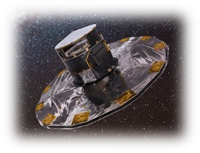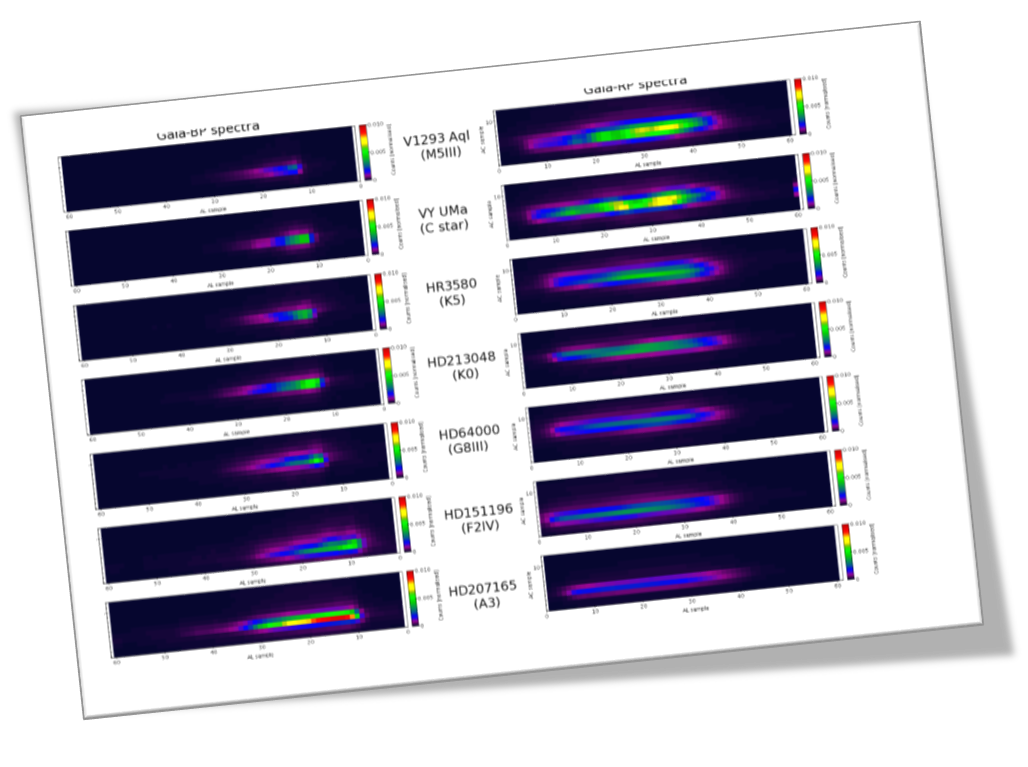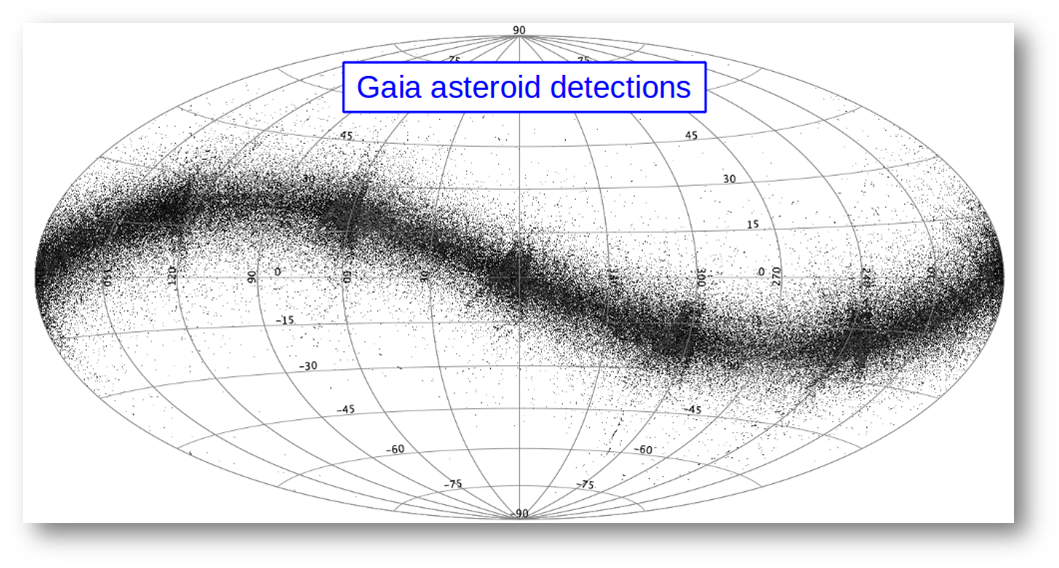
|
|
|
PROGRAM > Scientific Rationale
Astrometry has been fundamental to all the fields of astronomy, setting the stage for several ground-beaking scientific revolutions. Kepler’s laws, deduced after analysing the observations of Tycho Brahe are an outstanding example of this. Four centuries later, the ESA Gaia mission carries out an all-sky survey since July 2014 in astrometry, photometry and spectroscopy. This survey will be complete to magnitude 20 in astrometry and photometry and to magnitude 16 in spectroscopy (~1 billion and ~150 millions sources expected, respectively). The first Gaia data release (DR1) has been made publicly available on september 14, 2016. It consists of: (i) positions and magnitudes for about 1,200,000,000 single-stars, (ii) photometric data of RR Lyrae and Cepheid variable stars based on ecliptic-pole scans performed during the commissioning phase, (iii) the five-parameter astrometric solution - positions, parallaxes, and proper motions - for ~2 million stars in common between the Tycho-2 Catalogue and Gaia (TGAS). The main goal of this IAU symposium is to ensure the world-wide sharing of the Gaia mission results, foster international collaborations and discussions that will enhance the Gaia scientific return. Moreover, Gaia impacts directly many astronomy fields and, as a consequence, the symposium will naturally have an interdisciplinary character.
 The astrometry and reference frames science will be at the conference core. For many years, the state of the art in all-sky celestial cartography has been the Schmidt surveys of Palomar and ESO, and their digitized counterparts. Gaia is now providing the detailed 3D distributions and space motions of all these stars, complete to 20th magnitude. The measurement precision, reaching a few millionths of a second of arc, is unprecedented. The astrometric Gaia capabilities, already successfully validated after the first months of the mission, are already the bedrock of the first data release science. This will shape the interdisciplinary scientific discussions of the symposium.
The astrometry and reference frames science will be at the conference core. For many years, the state of the art in all-sky celestial cartography has been the Schmidt surveys of Palomar and ESO, and their digitized counterparts. Gaia is now providing the detailed 3D distributions and space motions of all these stars, complete to 20th magnitude. The measurement precision, reaching a few millionths of a second of arc, is unprecedented. The astrometric Gaia capabilities, already successfully validated after the first months of the mission, are already the bedrock of the first data release science. This will shape the interdisciplinary scientific discussions of the symposium.
In particular, the impact of Gaia on Milky Way research will be revolutionary. Starting with the first data release comprising the TGAS catalogue, Gaia will lead to a strong qualitative and quantitative change in Galactic studies. First, it will allow us to obtain a much sharper view of the Galactic disc thanks to stellar distances, kinematics and dynamics of unprecedented precision. Second, the combination of Gaia TGAS distances with existing data on stellar physical parameters and chemical abundances will permit the stellar ages estimation, a key parameter currently missing for  most of the stars. This opens the possibility, on one hand, of analysing the evolution of the physical and chemical characteristics of the Milky Way components (gradients, substructures, chemo-dynamical signatures...) and, on the other hand, of dating the processes that led the Milky Way to form as we see it today. This symposium will be a timely opportunity to present the first results of this time evolving chemo-dynamical picture of the Milky Way, as well as discuss its impact on theoretical models of Galaxy formation. In this context, the synergy between Gaia and other ground-based Galactic surveys will have a clear visibility. Finally, the arrival of Gaia stellar parameters and radial velocities in the near future will stimulate Milky Way studies for the years to come.
most of the stars. This opens the possibility, on one hand, of analysing the evolution of the physical and chemical characteristics of the Milky Way components (gradients, substructures, chemo-dynamical signatures...) and, on the other hand, of dating the processes that led the Milky Way to form as we see it today. This symposium will be a timely opportunity to present the first results of this time evolving chemo-dynamical picture of the Milky Way, as well as discuss its impact on theoretical models of Galaxy formation. In this context, the synergy between Gaia and other ground-based Galactic surveys will have a clear visibility. Finally, the arrival of Gaia stellar parameters and radial velocities in the near future will stimulate Milky Way studies for the years to come.
Regarding stellar physics, among the long list of science cases, Gaia data will help constrain stellar structure and evolution models from very precise distances and homogeneous parameters, including stars in rapid evolutionary phases and rare objects. Again, the 2.5 million stars included in the TGAS catalogue will be the starti ng point, and this symposium will offer the possibility of discussing the first results. Moreover, the Gaia sharp vision of stellar clusters, longstanding benchmarks for our knowledge of star formation and evolution, will also be a precious complement to ground based spectroscopic data. Finally, variable star physics will belong to the very heart of the first Gaia data release with the epoch photometry of RR Lyrae and Cepheids in the ecliptic-pole fields. They will be a showcase of Gaia data potential to analyse the physical properties of variables.
ng point, and this symposium will offer the possibility of discussing the first results. Moreover, the Gaia sharp vision of stellar clusters, longstanding benchmarks for our knowledge of star formation and evolution, will also be a precious complement to ground based spectroscopic data. Finally, variable star physics will belong to the very heart of the first Gaia data release with the epoch photometry of RR Lyrae and Cepheids in the ecliptic-pole fields. They will be a showcase of Gaia data potential to analyse the physical properties of variables.
The ultra-precise astrometry is also the unbeatable driver for Gaia based Solar System science and exoplanets, promising a revolution. Even with the first data release, Gaia will impact planetology by the availability of stellar astrometry, permitting new astrometric reduction of old Solar System observations and enhancing the reliability of predictions of stellar occultations by small bodies. Moreover, Gaia will provide a unique determination of distances and proper motions for many planet-hosting stars, thus placing improved constraints on formation and structural models of extrasolar planetary systems as well as the stellar hosts' environment. New ground-based as well as space-borne observational activities will be triggered by this change of perspective. Subsequent data releases and end-of-mission results will gradually build the complete picture.
reduction of old Solar System observations and enhancing the reliability of predictions of stellar occultations by small bodies. Moreover, Gaia will provide a unique determination of distances and proper motions for many planet-hosting stars, thus placing improved constraints on formation and structural models of extrasolar planetary systems as well as the stellar hosts' environment. New ground-based as well as space-borne observational activities will be triggered by this change of perspective. Subsequent data releases and end-of-mission results will gradually build the complete picture.
In summary, this symposium will mark the first step of the Gaia revolution in astrometry, our understanding of the Milky Way galaxy, stellar physics and the Solar system bodies. It will be the first opportunity to present and share in an international context, the expected and unexpected Gaia science results.

